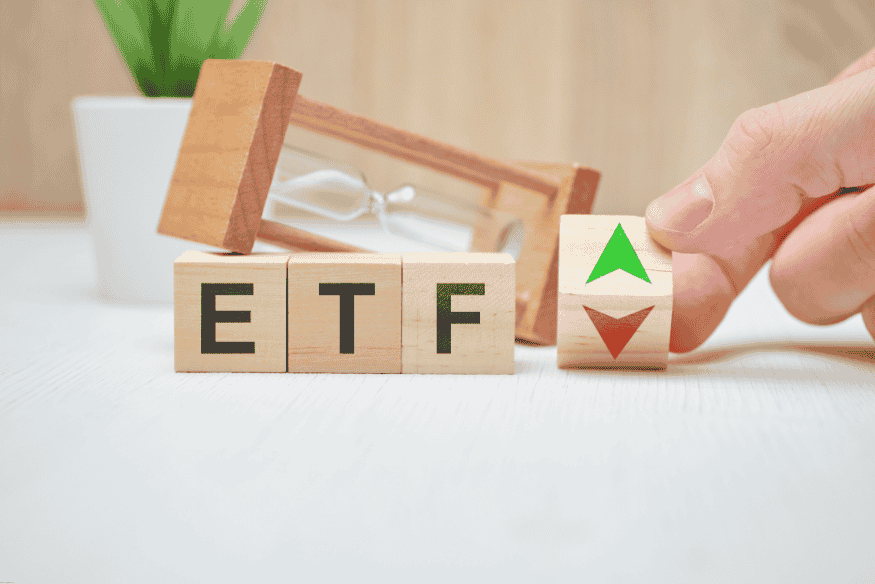Over the past decade, ETF investing in Asia has moved from niche strategy to mainstream investing. Once limited to institutional players, exchange-traded funds are now among the fastest-growing financial instruments for retail investors across Asia. From Tokyo to Singapore, Mumbai to Seoul, ETFs are reshaping how individuals build diversified portfolios and gain exposure to global and regional markets.
This surge in popularity is driven by the region’s expanding financial literacy, improved access to online brokerage platforms, and rising interest in low-cost, transparent investment options. ETFs allow investors to buy into a basket of assets—stocks, bonds, commodities, or sectors—with just a few clicks. More importantly, they offer liquidity, diversification, and cost efficiency, three pillars of sustainable wealth building.
In this article, we explore a long-term blueprint for Asian retail investors to succeed with ETFs. You’ll learn about the key benefits, strategies, regional opportunities, tax considerations, and risks associated with ETF investing in Asia. Whether you’re in Singapore, India, Malaysia, or Japan, this comprehensive guide will help you make smarter, data-driven decisions for your financial future.
Understanding ETFs and Their Role in Asian Markets
Exchange-Traded Funds (ETFs) combine the diversification of mutual funds with the flexibility of stocks. Traded on major exchanges, they allow investors to buy or sell shares throughout the day at market prices. In Asia, ETFs have evolved to cover everything from large-cap equity indices to thematic trends like clean energy, technology, and ESG investing.
A key reason for their popularity is cost-effectiveness. Unlike mutual funds, ETFs usually carry lower management fees, often below 0.5% annually. This makes them ideal for long-term compounding. Moreover, ETFs offer transparency—their holdings are disclosed daily—helping investors track exactly where their money is invested.
Asian financial hubs like Hong Kong, Singapore, and Tokyo are leading the way in ETF innovation. Regulators are promoting market liquidity and investor protection, which further boosts confidence. For retail investors, understanding how ETFs function—creation and redemption mechanisms, tracking error, and index methodology—is the first step toward building a resilient investment plan.

Why ETF Investing in Asia Is Gaining Momentum
The appeal of ETF investing in Asia is tied to several macroeconomic and technological shifts. The region’s rapid digitalization and expanding middle class have increased access to investment education and online brokerage tools. Low interest rates and volatile equity markets have also pushed investors toward passive strategies that deliver stable, long-term returns.
A growing number of local ETFs now track Asian benchmarks such as the Nikkei 225, MSCI Asia ex-Japan, and FTSE China A50. Investors can also access cross-border ETFs, allowing exposure to international assets from within Asian exchanges.
Institutional support is also a major factor. Pension funds and sovereign wealth funds across Asia are allocating more capital to ETFs for their liquidity and diversification benefits. This institutional participation adds credibility and deepens market liquidity—two essential ingredients for sustainable growth in ETF adoption.
Key Benefits of ETF Investing for Retail Investors
Retail investors across Asia are increasingly choosing ETFs for their simplicity and efficiency. The main advantages include:
- Diversification: A single ETF can give exposure to hundreds of companies or bonds across multiple countries.
- Liquidity: ETFs can be traded throughout the day like stocks, ensuring flexibility.
- Cost Efficiency: Lower fees mean higher long-term returns due to reduced drag from expenses.
- Transparency: Daily disclosure of holdings allows investors to make informed decisions.
- Tax Efficiency: ETFs typically generate fewer capital gains distributions than actively managed funds.
Another critical advantage is accessibility. With platforms like Tiger Brokers, Interactive Brokers, and Rakuten Trade, investors can buy global ETFs with minimal initial capital. For long-term wealth creation, the combination of low cost and diversification makes ETFs a cornerstone of modern retail portfolios.
Types of ETFs Popular in Asia
Asian markets now offer a diverse range of ETF products, catering to different investor profiles and objectives. The main categories include:
| Type of ETF | Focus Area | Example (Asia) |
|---|---|---|
| Equity ETFs | Track market indices | Nikkei 225 ETF, Hang Seng Index ETF |
| Bond ETFs | Government and corporate bonds | ABF Singapore Bond Index Fund |
| Sector ETFs | Specific industries | Global X China Clean Energy ETF |
| Commodity ETFs | Gold, oil, agriculture | SPDR Gold Shares |
| Thematic ETFs | ESG, technology, AI | Mirae Asset Asia Innovation ETF |
Thematic ETFs, in particular, are gaining traction among young investors who prefer aligning their investments with future trends such as renewable energy, artificial intelligence, and digital finance. The growing demand for ESG-compliant ETFs also reflects Asia’s shift toward sustainable investing.
Regional ETF Markets: Opportunities and Differences
ETF adoption varies widely across Asian economies due to differences in regulation, market maturity, and investor behavior:
- Japan: One of the most developed ETF markets globally, supported by the Bank of Japan’s active involvement.
- China: Rapidly expanding ETF ecosystem, with new thematic and cross-border funds launched monthly.
- India: ETFs are growing fast, particularly Nifty 50 and sectoral funds driven by retail SIPs (Systematic Investment Plans).
- Singapore: A hub for international ETFs due to its open regulatory environment and global investor base.
- South Korea: A robust domestic ETF market with high retail participation and strong liquidity.
Understanding each market’s characteristics helps investors identify the most efficient trading venues, currency exposure risks, and taxation differences before building a regionally diversified ETF portfolio.
HHow to Build a Long-Term ETF Portfolio in Asia
A successful long-term ETF strategy starts with asset allocation—the balanced mix of equities, bonds, and alternative assets designed to match your financial goals and risk tolerance. Your ideal asset mix will depend on your age, investment horizon, and income stability. For instance, younger investors in their 20s and 30s can typically afford more exposure to equity ETFs, while retirees may prefer a larger share of bond ETFs to preserve capital.
Example allocation models:
- Conservative investors: 70% bonds, 20% equity ETFs, 10% commodities.
- Balanced investors: 50% equity ETFs, 30% bonds, 20% thematic ETFs.
- Aggressive investors: 70% equities, 20% thematic ETFs, 10% emerging markets.
Using Dollar-Cost Averaging (DCA) is particularly effective in Asia’s volatile markets. This strategy involves investing a fixed amount at regular intervals, regardless of market conditions, reducing emotional bias and smoothing entry points over time. For example, an investor contributing $200 monthly into a diversified ETF basket can accumulate more units when prices dip and fewer when prices rise—enhancing long-term cost efficiency.

Annual portfolio rebalancing is also critical. As certain assets outperform, they may distort your target allocation. Periodically selling overperforming ETFs and reinvesting in underweighted ones helps maintain your desired risk profile. Investors should also consider sectoral and geographic diversification—combining Asian ETFs with global funds provides stability against local market downturns.
Lastly, include thematic or ESG ETFs to capture emerging opportunities in sectors like green technology, healthcare innovation, and digital infrastructure. These funds align with Asia’s economic transformation and provide exposure to long-term structural growth trends. Combining traditional index ETFs with forward-looking thematic ones can create a well-rounded, resilient investment portfolio designed to grow steadily over decades.
Risks and Challenges in ETF Investing
While ETFs are considered efficient and diversified investment tools, they are not risk-free. Understanding these risks is essential for building a sustainable long-term strategy.
- Market Risk: ETFs reflect the performance of their underlying assets, so they rise and fall with market volatility. A broad-based index ETF may limit losses, but it cannot eliminate them.
- Tracking Error: This occurs when an ETF’s returns deviate slightly from its benchmark index due to fees, imperfect replication, or liquidity constraints.
- Liquidity Risk: ETFs with low trading volumes or specialized focuses—such as niche thematic or small-cap ETFs—may experience wider bid-ask spreads, making it harder to exit positions quickly.
- Currency Risk: Many Asian investors buy U.S.-listed or global ETFs, exposing them to currency fluctuations that can amplify or reduce returns when converted back to local currencies.
- Regulatory Risk: ETF rules differ by country. Changes in taxation, disclosure, or foreign investment limits can affect fund operations and performance.
Investors must also be cautious about synthetic ETFs, which use derivatives rather than holding physical assets. These products can introduce counterparty risk if the issuing financial institution fails. Reading the ETF’s prospectus helps clarify whether the fund is physically or synthetically replicated, its expense ratio, and its liquidity profile.
Another overlooked challenge is behavioral risk—investors reacting emotionally to market fluctuations. Selling during downturns or chasing recent winners often erodes returns. Setting predefined investment goals, maintaining diversification, and staying disciplined through volatility are key defenses.
Lastly, consider reinvestment and taxation policies in your country. Some ETFs automatically reinvest dividends, while others distribute payouts that may be taxed differently. Understanding these factors before investing helps avoid unpleasant surprises and ensures your ETF portfolio supports your long-term financial objectives.
Tax Considerations and Cost Factors Across Asia
Tax rules for ETF investing vary across countries:
| Country | Capital Gains Tax | Dividend Withholding Tax |
|---|---|---|
| Singapore | None | 0% |
| Hong Kong | None | 0% |
| Japan | 20% | 15–20% |
| India | 10–15% | 10% |
| Malaysia | None | 0–10% |
Investors should also consider trading costs such as brokerage fees, exchange spreads, and annual expense ratios. For example, while U.S.-listed ETFs may offer lower fees, they could incur higher tax obligations for Asian residents. Understanding total cost of ownership (TCO) helps in choosing the most efficient ETF options for long-term compounding.
The Role of Technology and Fintech Platforms
Fintech innovation has made ETF investing in Asia more accessible than ever. Mobile-first trading apps, robo-advisors, and AI-driven portfolio tools allow investors to research, execute, and track ETFs seamlessly.
Platforms like Syfe (Singapore), Groww (India), and Futu (Hong Kong) provide low-cost, user-friendly interfaces tailored for beginners and experienced traders alike. Many offer fractional ETF investing, allowing users to start with as little as $10.
Artificial intelligence tools can now analyze market trends, optimize asset allocation, and suggest rebalancing strategies. This democratization of wealth management is fueling Asia’s next generation of long-term ETF investors.
Future Outlook for ETF Investing in Asia
The future of ETF investing in Asia looks exceptionally bright. Market analysts project double-digit annual growth in ETF assets across emerging economies by 2030. Innovations like active ETFs, thematic ESG funds, and cross-border trading agreements are expanding investor choice.
Regulators across the region are also enhancing transparency and investor protection, encouraging more retail participation. The ongoing digital transformation—combined with greater financial literacy—will continue to drive ETF adoption.
For retail investors, the message is clear: ETFs offer a powerful, scalable path toward long-term wealth creation. As markets evolve, those who stay informed and disciplined will benefit from Asia’s economic dynamism and innovation.
The Impact of Global Economic Shifts on Asian ETFs
Global macroeconomic trends such as U.S. interest rate changes, China’s growth trajectory, and geopolitical developments increasingly affect Asian ETF performance. Investors should monitor currency fluctuations and trade policies that can influence export-driven economies.
Despite short-term volatility, ETFs tracking diversified indices often remain resilient over time, making them valuable for long-term regional exposure. Staying informed through reliable financial sources and maintaining a balanced allocation helps mitigate global uncertainty while capitalizing on Asia’s structural growth potential.
Education and Awareness: Building Smarter ETF Investors
Financial education plays a crucial role in expanding ETF investing in Asia. As more governments and financial institutions launch literacy campaigns, retail investors are gaining confidence in passive strategies. Online courses, investment communities, and financial influencers on platforms like YouTube and X (formerly Twitter) have simplified complex concepts for beginners.
This new wave of informed investors is driving sustainable demand for ETFs. By understanding fundamentals such as compounding, diversification, and risk tolerance, retail participants can make disciplined, goal-oriented decisions that support wealth accumulation over decades.
Conclusion

ETF investing in Asia represents more than a trend—it’s a structural evolution in personal finance. With advantages like low cost, diversification, and liquidity, ETFs empower investors to participate in economic growth across borders without complex management. Their adaptability and accessibility make them suitable for both beginners and seasoned investors aiming for consistent, long-term returns.
Beyond financial efficiency, ETFs also promote financial inclusion. They give access to markets that were once out of reach for average individuals, bridging gaps between developed and emerging economies. In Asia’s dynamic and fast-growing environment, this inclusivity helps build more resilient financial ecosystems.
Looking forward, the combination of fintech innovation, sustainable investing, and regional cooperation will continue to shape the future of ETF investing in Asia. Investors who embrace education, patience, and disciplined portfolio construction can unlock the full potential of these instruments. By thinking long-term, reinvesting dividends, and maintaining diversification, they can secure a path toward financial independence that aligns with Asia’s bright economic horizon.









